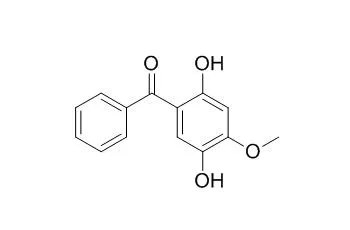| Description: |
Cearoin has anti-inflammatory, and antiallergic activities, it can markedly inhibit inflammatory responses including LPS-induced NO production by suppressing the expression of iNOS mRNA and LPS-induced mRNA expression of TNFα and CCL2. Cearoin induces autophagy, ERK activation and apoptosis in neuroblastoma SH-SY5Y cells, which is mediated primarily by ROS generation, suggesting its therapeutic application for the treatment of neuroblastomas. |
| In vitro: |
| Planta Med. 1998 Mar;64(2):153-8. | | Three new flavonoids and antiallergic, anti-inflammatory constituents from the heartwood of Dalbergia odorifera.[Pubmed: 9525107 ] |
METHODS AND RESULTS:
Three new flavonoids, (3R)-4'-methoxy-2',3,7-trihydroxyisoflavanone (11), 7-methoxy-3,3',4',6-tetrahydroxyflavone (18), and 2',7-dihydroxy-4',5'-dimethoxyisoflavone (22), were isolated from the heartwood of Dalbergia odorifera T. Chen. (Leguminosae), together with twenty-two known compounds, (S)-4-methoxydalbergione (1), Cearoin (2), medicarpin (3), formononetin (4), sativanone (5), 3-hydroxy-9-methoxy-coumestan (6), meliotocarpan A (7), isoliquiritigenin (8), stevein (9), liquiritigenin (10), 3',4',7-trihydroxyflavanone (12), butein (13), 3'-hydroxymelanettin (14), koparin (15), bowdichione (16), fisetin (17), melanettin (19), sulfuretin (20), 3'-hydroxydaidzein (21), 3'-O-methylviolanone (23), xenognosin B (24), and dalbergin (25).
CONCLUSIONS:
These flavonoids were evaluated in antiallergic and anti-inflammatory tests. The results showed that (S)-4-methoxydalbergione (1) and Cearoin (2) exhibited antiallergic activity while (S)-4-methoxydalbergione (1), Cearoin (2), butein (13), koparin (15), bowdichione (16), 3'-O-methylviolanone (23), and xenognosin B (24) showed significant anti-inflammatory activity. |
|






 Cell. 2018 Jan 11;172(1-2):249-261.e12. doi: 10.1016/j.cell.2017.12.019.IF=36.216(2019)
Cell. 2018 Jan 11;172(1-2):249-261.e12. doi: 10.1016/j.cell.2017.12.019.IF=36.216(2019) Cell Metab. 2020 Mar 3;31(3):534-548.e5. doi: 10.1016/j.cmet.2020.01.002.IF=22.415(2019)
Cell Metab. 2020 Mar 3;31(3):534-548.e5. doi: 10.1016/j.cmet.2020.01.002.IF=22.415(2019) Mol Cell. 2017 Nov 16;68(4):673-685.e6. doi: 10.1016/j.molcel.2017.10.022.IF=14.548(2019)
Mol Cell. 2017 Nov 16;68(4):673-685.e6. doi: 10.1016/j.molcel.2017.10.022.IF=14.548(2019)